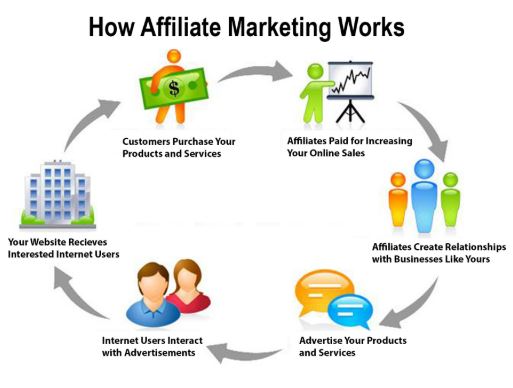Affiliate marketing has become one of the most accessible and scalable ways to make money online. If you’re just starting out, it may seem overwhelming, but don’t worry—this guide is designed to help beginners navigate the world of affiliate marketing and earn that exciting first commission.
What Is Affiliate Marketing?
Affiliate marketing is a performance-based marketing strategy where a business rewards affiliates for driving traffic or sales to their products or services. As an affiliate, you promote a product using a unique tracking link. When someone clicks that link and makes a purchase, you earn a commission.
This model benefits everyone involved: the company gets more customers, the consumer gets recommendations, and you (the affiliate) get paid for your efforts.
Step 1: Understand the Affiliate Ecosystem
To succeed in affiliate marketing, it’s crucial to understand the main players:
- Merchants: These are the companies or individuals who sell products or services.
- Affiliates: That’s you! The person promoting the merchant’s product.
- Consumers: People who purchase through your affiliate links.
- Affiliate Networks: Platforms like ShareASale, ClickBank, or Amazon Associates that connect merchants with affiliates.
Step 2: Choose Your Niche
Picking a niche is the foundation of your affiliate marketing success. Choose something you’re passionate about or have knowledge in. A focused niche allows you to become an authority and build trust with your audience.
Popular niches include:
- Health and fitness
- Personal finance
- Technology and gadgets
- Beauty and skincare
- Online education and courses
Step 3: Find Affiliate Programs
Once you’ve selected a niche, look for affiliate programs that fit within it. Here are a few places to start:
- Amazon Associates: Great for beginners with a wide range of products.
- ClickBank: Ideal for digital products.
- CJ Affiliate: Offers a variety of merchants across multiple niches.
- Individual company programs: Many brands run their own affiliate programs, often found in their website footer.
Step 4: Build a Platform
To promote affiliate products, you need a platform. This could be:
- A blog or website: Great for writing reviews, tutorials, or informational content.
- YouTube channel: Perfect for product demos and reviews.
- Social media accounts: Instagram, TikTok, and Pinterest work well for visual promotion.
- Email newsletter: An excellent way to engage and convert subscribers over time.
Whichever you choose, make sure it’s a place where you can consistently create valuable content and build an audience.
Step 5: Create Quality Content
Content is the core of affiliate marketing. Your goal is to help your audience make informed decisions. The better your content, the more trust you build—and trust leads to clicks and conversions.
Types of content to create:
- Product reviews and comparisons
- How-to guides and tutorials
- Listicles (e.g., “Top 10 Fitness Trackers in 2025”)
- Case studies or personal experiences
Always include your affiliate link in a natural, helpful way. Transparency is key, so disclose your affiliate relationships clearly.
Step 6: Drive Traffic to Your Content
Creating content isn’t enough; you need to get eyeballs on it. Here are a few methods:
- Search Engine Optimization (SEO): Optimize your blog posts for keywords people are searching for.
- Social Media Marketing: Share your content on platforms where your audience hangs out.
- Email Marketing: Build an email list and send out your content regularly.
- Paid Ads: Google Ads or Facebook Ads can drive traffic quickly, but they require an investment.
Step 7: Track Performance and Optimize
Use tracking tools to monitor what’s working and what isn’t. Most affiliate programs offer dashboards showing your clicks, conversions, and commissions.
Tools like Google Analytics or Pretty Links (for WordPress) can also help you track which pages and links perform best. Use this data to improve your content and focus on what drives the most conversions.
Step 8: Be Patient and Stay Consistent
Affiliate marketing is not a get-rich-quick scheme. It takes time to build trust, grow traffic, and learn what works. But with patience and consistent effort, you’ll eventually see results.
Bonus Tips for Earning Your First Commission
- Start with products you personally use and love. Your genuine experience builds credibility.
- Join online communities in your niche to share your content and get feedback.
- Keep learning through blogs, podcasts, and courses.
- Avoid spammy tactics. Focus on building relationships, not just sales.
Final Thoughts
Earning your first commission as an affiliate marketer is a major milestone. It proves that your efforts are paying off and sets the stage for even greater success. By choosing the right niche, creating valuable content, and consistently driving traffic, you can turn affiliate marketing into a steady source of income.
Stick with it, keep experimenting, and celebrate every small win along the way. Your first commission is just the beginning of your affiliate marketing journey.








0 Comments